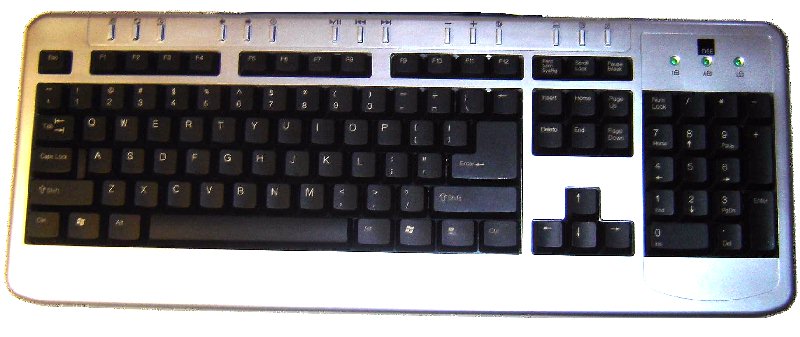Categories
- Adaptors Connectors (31)
- Antennas-> (79)
- Bargain Bin (13)
- Brackets (19)
- Cable & Leads-> (48)
- Chargers (12)
- Computer & Media (12)
- Cradles & Mounts (13)
- Electrical (16)
- FREEBIES! (4)
- Fuses (4)
- iPhone Repairs (1)
- Microwave Parts (27)
- Mobile accessories (7)
- Mobile Handsfree (11)
- Mobile Phones (4)
- Tools (18)
- Watches - Clocks (11)
- Gift Certificates (5)
- Specials ...
- New Products ...
- Featured Products ...
- All Products ...
Important Links
Information
Manufacturers
Specials [more]

GIANNI BULGARI ENIGMA LADIES WRIST WATCH - FINEST QUALITY!
Save: 67% off

DORO CORDLESS DIGITAL PHONES, DUAL PACK. DECT. NeoBio 20 BLACK
Save: 43% off
Featured [more]

*FREE!* SLIMLINE USB KEYBOARD WITH PS2 ADAPTOR + 15 MULTIMEDIA HOTKEYS.
Save: 100% off
Battery Information
What is a Lithium Ion battery and how many types of batteries are there?
Mobile Phone Battery Types
The four most common types of batteries for mobile phones are:
1. Lithium Ion (Li-Ion)
2. Lithium Polymer (Li-Poly)
3. Nickel Metal Hydride (NiMH)
4. Nickel Cadmium (NiCd)
Lithium Ion Batteries (Li-Ion) are the most popular mobile phone batteries available.
Li-Ion have replaced NiMH batteries for many phones because they provide 4 distinct advantages:
1. Li-Ion batteries provide 40% longer Standby and Talk Times than NiMH batteries.
2. Li-Ion batteries are lighter and more compact than NiMH batteries.
3. Li-Ion batteries do not suffer from memory effect.
4. Li-Ion batteries will last over 30% longer than NiMH batteries because the cells accept more charge cycles.
5. Li-Ion batteries rank as the `best value` of all mobile phone battery types.
Lithium Polymer Battery (Li-Poly) is the newest and most advanced technology for cellular phone batteries. This brand new chemistry of battery allows for the most compact cells available. Li-Poly batteries are extremely light and thin and allow the most battery life for the size. Lithium Polymer cellular batteries share all of the benefits of Li-ION batteries but will last over twice as long.
Nickel Metal Hydride Batteries (NiMH) were introduced in the early 1990s as an improvement over older chemistries like Nickel Cadmium (NiCd). Although they may have a very slight memory effect, NiMH batteries are much more reliable than previous chemistries. Compared to a NiCd battery of equal size, a NiMH battery will run for 30-40% longer on each charge. NiMH batteries can be recharged 60% in just 15 minutes using a car charger, an obvious asset for motorists. The unique NiMH chemistry packs much more power than NiCd. Additionally, NiMH batteries often have twice the lifespan of NiCds.
Nickel Cadmium Batteries (NiCd) are manufactured using older technology and suffer from memory effect. They must be completely discharged before recharging to avoid incurring damage to the battery. This discharge procedure can add extra time to the overall charging process. The memory effect inherent in all NiCd batteries reduces the batterys overall capacity, run time, and life span. NiCd batteries are being slowly phased out and replaced by NiMH and Li-Ion. Also, the nickel cadmium used in NiCd batteries is highly toxic to the environment. Thus, it is difficult to responsibly dispose of NiCd batteries.
Memory Effect - The term memory in reference to batteries means the battery remembers its usual discharge point and superficially needs a charge whenever it hits that point. In other words, if you have a NiCad that always gets discharged to only 50% of its capacity, it will eventually not run below that 50% mark if you ever wanted to discharge it to a lower point.
NiCd batteries and their inherent memory effect generate many problems and customer complaints. In most cases their charge-holding capacity greatly declines or they burn out and die well in advance of their normal life expectancy. For these reasons, we no longer sell NiCd batteries or support NiCd technology. Instead, we offer NiMH and LiIon replacement batteries for existing NiCd models.
What is OEM?
OEM is short for Original Equipment Manufacturer. It means that the product was produced by the original manufacturer. (eg. Motorola, Nokia, Samsung...)
TROUBLESHOOTING guide for batteries which will not charge:
Clean the battery terminals with a clean dry cloth, also the contacts inside the phone.
Re-insert battery and plug in the charger, leave for up to 10 minutes, if charging does not commence try turning the phone on whilst on charge.
Still not charging? If available try using another charger, or car charger, USB charger etc.
If you have a multi/voltmeter measure the voltage across the Pos/Neg terminals of the battery. It should correspond with what is written on the battery, usually around 3.7v.
If competent measure the voltage output of the charger, this reduces over time as the charger ages, to a point where it will not charge the phone. The output should relate to the voltage written on the charger.
If still no sign of life try leaving on charge for a few hours, and attempt to turn the phone on periodically.
Please Click HERE to contact us if you have any further Questions.


